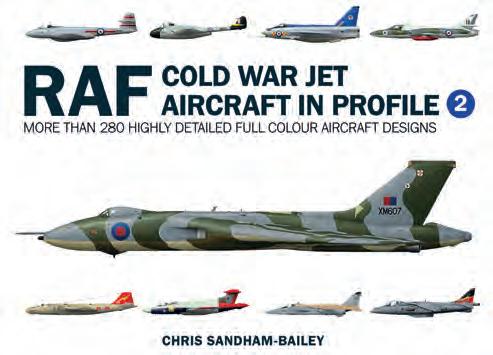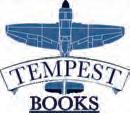Foreword
On April 2, 1982, Argentine forces invaded the Falkland Islands and three days later the Task Force sailed from Portsmouth with every Sea Harrier in the country; a total of 21 aircraft against a possible force of around 140 Argentine fast-jets. Not the kind of odds that one would normally plan to have for such an endeavour but we were confident that we would acquit ourselves well.

We saw our first action on May 1, when Hermes launched a nine-ship attack on Stanley airfield, with the remaining three aircraft attacking Goose Green. These attacks caused chaos, destroying numerous aircraft on the ground and the only damage sustained by us was when I was hit in the tail by a 20mm Rheinmetall anti-aircraft gun. Later that day, SHAR Combat Air Patrols intercepted a number of Argentine aircraft, resulting in the downing of a Canberra bomber, a Dagger (Israeli-built Mirage V) and two Mirage III supersonic fighters. This was our baptism of fire and set the tone for the next six weeks of fighting.
sortie with Lt David Smith so that we could land back after dark and become qualified to fly at night. In the event, we were scrambled to cover the Sir Tristram and Sir Galahad, that had been attacked by Skyhawks in Port Pleasant, to the southwest of Stanley.
We arrived to find both ships burning fiercely and several helicopters trying to evacuate the members of the Welsh Guards. After 40 minutes on CAP, I picked up a formation of Skyhawks attacking a small landing craft to the south of us and plunged down at very high speed to try to head them off. Unfortunately, I was unable to prevent the landing craft from being hit but in the following few seconds, I shot down two Skyhawks with AIM-9L missiles and engaged a third with guns, despite my gunsight having gone unserviceable as I fired the second missile.
Author and artist: Chris Sandham-Bailey
Design: Burda Druck India Pvt. Ltd.
Publisher: Steve O’Hara
Published by: Mortons Media Group Ltd, Media Centre, Morton Way, Horncastle, Lincolnshire LN9 6JR Tel. 01507 529529
Printed by: William Gibbons and Sons, Wolverhampton
ISBN: 978-1-911639-93-0
© 2022 Mortons Media Group Ltd. All rights reserved. No part of this publication may be reproduced or transmitted in any form or by any means, electronic or mechanical, including photocopying, recording, or any information storage retrieval system without prior permission in writing from the publisher.

Acknowledgements: Thanks to David Morgan, Brian Johnstone, Simon Jones, Rowland White, Santiago Rivas and Nick Greenall whose knowledge and time has been invaluable.
Our operations were hampered by truly awful weather, with savage storms, very poor visibility and huge seas. The SHAR coped with these conditions far better than any other carrier-borne aircraft could have hoped to and its ability to hover alongside and pick the best time in the ship’s cycle to land was truly vital. On a number of occasions, we flew with a cloud base of less than 100ft and on one such day, I had to climb into cloud to land!
I claimed my first air-to-air kills on May 23, a couple of days after the amphibious landings in San Carlos Water. I intercepted four helicopters heading for Port Howard on West Falkland and knocked the lead Puma out of the sky by flying very low over his rotor-head. I then took out the A109A gunship escort with 30mm cannon fire before taking the tailboom off a second Puma on the ground, with my last remaining Aden rounds.
During the conflict, I flew 53 SHAR missions and my final action took place on June 8. I was scheduled to fly a dusk
Smith fired a missile and brought down the third attacker at maximum range and we both recovered to Hermes with less than two minutes worth of fuel remaining. Luckily, they kept the bar open for us!
During the conflict, SHARs were responsible for the downing of 21 enemy aircraft, the sinking of two ships and the disabling of two further ones. We did not lose a single aircraft in air combat, although we did lose two to ground fire, two in bad weather and a further one that slipped off HMS Invincible’s deck during hard manoeuvring.
The SHAR proved itself to be a remarkable aircraft and a great credit to British Aerospace and those with the vision to design it. It truly was one of a kind and was loved by all who flew it or worked on it. It was both the most demanding and the most enjoyable aircraft that I have ever had the pleasure to fly. Despite its limitations in range and speed, its adaptability made it a supremely versatile fighter and without it, the Falklands could simply not have been retaken.
David Morgan
003
004 Introduction 014 XZ492/23 018 XZ459/25 024 XZ460/26 028 XZ496/27 032 XZ500/30 036 XZ450/50 040 ZA192/92 044 ZA193/93 048 XZ455/12 054 XZ457/14 058 XZ494/16 062 ZA191/18 066 XZ493/001 070 XZ495/003 074 ZA175/004 078 XZ498/005 082 XZ451/006 086 XZ452/007 090 XZ456/008 094 XZ453/009 098 XZ458/007 102 XZ491/002 106 XZ499/99 112 ZA174/000 116 ZA176/76 120 ZA177/77 124 ZA190/009 128 ZA194/94
David Morgan with Puma wreckage. David Morgan
Introduction
a promising private venture it had undertaken – the P.1127 vertical take-off and landing aircraft. This was duly developed into the Kestrel and by April 1969 the Harrier GR.1 had entered service with the Royal Air Force’s 1 Squadron.
The Falkland Islands is a UK overseas territory sitting just over 300 miles from the Argentine mainland. Following their initial discovery by Captain John Strong of the English navy in 1690, the islands changed hands several times between the British, French and Spanish . Since 1833 the islands have been administered and managed as a British overseas territory. Having declared independence from Spain in 1816, Argentina claimed to inherit Spanish interests in the region. From that point on, Argentina continued to contest British sovereignty of the islands. Finally, on April 2, 1982, Argentinian forces invaded the Falkland Islands.
A task force was quickly assembled in Britain to retake the islands should negotiations at the UN fail – and included in the build-up was the only fighter that would be able to operate in the theatre – the Sea Harrier. It was the last all-British fighter to be designed and built and
when it first entered service there were reservations among those who did not know what it was capable of. It was, after all, very different from previous carrier-based naval fighters such as the de Havilland Sea Vixen and McDonnell Douglas Phantom, relying on a single pilot to do all the work that two had previously done in those larger jets.
When it entered service there seemed little likelihood of the Sea Harrier seeing combat unless the Cold War heated up but this all changed on April 2, 1982. A small Sea Harrier force was part of the convoy sailing south and these would soon be called upon to prove themselves time and again against Argentina’s Mirages and Skyhawks, earning a formidable reputation in the process.
The Sea Harrier was, at this time, the very latest evolution of a lineage stretching back to the 1960s when Hawker Siddeley was attempting to drum up interest in
The Harrier was initially unable to take off vertically with a full combat load – but by beginning a conventional take off and then angling the nozzles, a considerably shortened take off run with near-maximum all up weight could be achieved. Naturally the viability of operating the aircraft from carriers was considered and trials using P.1127 XP831 on board HMS Ark Royal began on February 8, 1963, with Bill Bedford and Hugh Merewether conducting the flights. Many more trials were conducted prior to the Sea Harrier entering service, including GR.1s and the Hawker Siddeley two-seat Harrier G-VTOL, not only on RN ships but also Australian, French and Indian carriers.
Following the cancellation of the Hawker Siddeley P.1154, the Royal Navy had initially received the F-4K Phantom as a replacement but with budget reductions and the new generation of carriers being too small to realistically operate larger jets, a navalised Harrier with the short take off run was deemed the most practical and affordable option.
The new carriers were primarily designed for rotary wing and thus lacked the steam catapults and arrester cables vital for operating conventional fixed wing aircraft. Interest really began following the entry into service of the GR.1 and the deployment of 1 Squadron on HMS Eagle in 1971. This was further bolstered by the USMC who commenced sea trials in early 1971 with a view to continued carrier based

004 SEA HARRIERS OF THE FALKLANDS WAR
Sea Harrier FRS.1 ZA177 at a snowy Yeovilton on delivery day, January 5, 1982. Brian Johnstone
being toned
operations – despite the AV-8A not being designed for such a role. From 1972, the Spanish began making preparations to operate their Harrier variant, the AV-8S Matador, from the wooden-decked SNS Dédalo. Metal plates would be fitted, allowing the Matadors to take off and land without melting the pitch on the deck.

Discrete enquiries were tentatively made by the British government and subsequently Hawker Siddeley was contracted to research the viability of producing a sea going variant of the Harrier GR.3, then in development, for the Royal Navy’s carriers. Eventually, in May 1975, an order was placed for three preproduction and 24 production aircraft. A new name for the aircraft, Osprey, was considered but eventually rejected in favour of Sea Harrier.
As many elements of the GR.3 were retained as possible to keep costs down, but the aircraft still underwent significant changes due to the differing roles of the two aircraft. The original Harrier was designed primarily as a ground-
attack aircraft with the secondary role of reconnaissance, but the Navy required a fleet defender that could also perform the maritime strike role against shipping. Having worked under Sir Sydney Camm, Dr John Fozard took over as chief designer and having led the P.1154 and Harrier development teams he took on the Sea Harrier, remaining with the project until 1978.
Carrier landings required improved pilot visibility so the seat was raised by 10in/25.5cm and a larger bubble canopy was created. This also served to increase internal space and facilitated the inclusion more equipment and a slight alteration to the control panels to improve ergonomics. Also vital was the inclusion of a radar and the Ferranti Blue Fox was developed for the Sea Harrier FRS.1, based on the Ferranti ARI 5979 Sea Spray radar which was then in the latter stages of development and being prepared for installation in the Westland Lynx.
Squeezed into a very tight space, the radar had to perform a variety
of functions including navigation, lock-on track for the missile and gun weapon systems and search and detection, both air-to-air and air-to-sea. In order to accommodate all the information, an improved HUD powered by a 20,000 word computer was installed. The radar still had limitations, especially in the look down mode over land, but an upgraded Blue Vixen radar went a long way to resolving this and was installed in the later FA.2.
Lessons learned from the GR.1 and GR.3 led to much of the electrical system being revised. To handle heavier landings and the rolling deck of a carrier, the undercarriage were altered to include a new braking system and tie down lugs. One key upgrade was the internal environmental control, although this was primarily installed for the radar system it also meant that the pilot would not suffer quite so much when operating in hotter climes.
The aircraft’s Pegasus engine also required a redesign, with parts being replaced to reduce the risk of
005 IntroductIon
Markings
down on board HMS Hermes David Morgan
corrosion and to meet an increase in requirements for electrical power and hydraulic pressure. Weight increased by 70lb but the performance of the Pegasus 104 compared to the 103 used in the GR.3 was unchanged, producing 20,500lb of thrust.
Delays installing instrumentation in the three preproduction Sea Harriers – XZ438, XZ439 and XZ440 – meant that the first production FRS.1,
XZ450, was the first Sea Harrier to fly on August 20, 1978, from Dunsfold with Hawker Siddeley test pilot John Farley at the controls. It was painted in the traditional RN scheme of gloss Extra Dark Sea Grey BSC381C:640 with gloss White underside. The preproduction aircraft were eventually completed with XZ438 taking to the air on December 30, 1978. XZ439 first flew on March 30, 1979, and
XZ440 joined them on June 6. The second production FRS.1 had already been completed by then and handed over to the Royal Navy in an official ceremony on May 25, 1979.


When a new aircraft was adopted by the Senior Service an Intensive Flying Trials Unit was set up; this would normally be 700 Naval Air Squadron and for each aircraft type a different single letter suffix added.

006 SEA HARRIERS OF THE FALKLANDS WAR
XZ494 halfway through being toned down, note only one of the gun pods has been painted. David Morgan
XZ460/26 lining up for launch with ZA191/18 being towed into position. Simon Jones
ZA190 still wearing the 801 NAS markings after the war. Brian Johnstone
700A NAS was formed at RNAS Yeovilton on September 18, 1979, and it initially had just one Sea Harrier, XZ451, and a Harrier T.4 borrowed from the RAF (the unit strength was later increased to five Sea Harriers). The naval pilots not only had to familiarise themselves with the unique characteristics of the Harrier but also to develop a training method for using the new ski jump method of taking off.
Running concurrently with the work on the Sea Harrier, some Harrier GR.1s and T.2s were used to test the ski jump take off theory. This ultimately led to the carriers being fitted with 12° ramps by the end of the decade – ready for the Sea Harriers to embark. The ski jump cut the Sea Harrier’s take off roll by 60%.

After a short work up, 700A NAS (still based at Yeovilton) was renumbered 899 NAS and remained the RN training and trials squadron until the retirement of the Sea Harrier in 2005. Unlike other variants, the Sea Harrier had been primarily intended as a fleet defender and fighter so naturally there was much interest in how it would perform in combat. During the first few months, Lt Cdr Nigel ‘Sharkey’ Ward the CO of 700A had the opportunity to test the Sea Harrier against some F-5s from a US aggressor unit based in the UK with the kill ratio averaging 3:1 in the Sea Harrier’s favour. Further encounters with US aircraft were even more favourable and even against the Lightning it was 2:1.
Ongoing deliveries allowed 800 and 801 Squadrons to be formed on April 23, 1980, and February 26 respectively, although due to delays many flew without the radar unit – a lump of concrete acting as a temporary substitute until mid1981. By the end of the year the two squadrons were fully operational and fortuitously not a moment too soon, since the Sea Harrier was about to go to war.
General Leopoldo Galtieri was installed as the president of Argentina in December 1981 having deposed the previous military dictator General Roberto Viola. Despite having come to power only recently public opinion of both him and his military junta was low. In an effort to distract from domestic issues while appealing to populist nationalism, an invasion of the Falkland Islands was planned. There was also the belief internally that there would be no military reaction from the UK.
The first indication of an invasion was the landing of Argentine scrap metal merchants on South Georgia to reclaim metal from an abandoned whaling station. Among this group were some marines posing as civilians who then raised the Argentine flag. The result was an increase in tensions between Argentina and the UK before, on April 2, 1982, a full scale invasion of Falkland Islands by the Argentine military commenced.
The invading force met with resistance overnight from the small force of Marines garrisoned on the island but by morning the governor had surrendered. Later that day, Operation Corporate was initiated by the British Government to retake both South Georgia and the Falkland Islands. The two carriers HMS Hermes and HMS Invincible received orders to prepare for departure with 800 and 801 Squadrons embarked. 801 NAS had recently disembarked for Easter leave and 800 NAS had gone on leave the night before, so all personnel had to be hastily contacted and rounded up.
In the words of Simon Jones, plane captain for XZ459 “I was on night watch on 800. We were just about to leave early, to go on Easter
007 IntroductIon
ZA193 recovering to Hermes on May 24, 1982, following Lt Smith shooting down a Dagger – hence only one AIM-9L Sidewinder. David Morgan
leave, when the engineering officer walked into the hangar to say he needed all the aircraft ready to fly asap. We had literally just finished signing up to put the aircraft in suspension for leave, and I had just returned from delivering all the aircraft batteries to the battery shop for servicing. I shot over and got all the batteries back and was then sent to wake up all the day shift people to get them into work ASAP. Most of them had been at a party the night before so I received some interesting comments waking the up at around 4am!”
It was theorised that the Sea Harriers would be outnumbered by approximately 10:1, 800 NAS having 12 Sea Harriers and 801 NAS only 8 at their disposal. However, both squadrons would be bolstered slightly by the addition of aircraft from 899 NAS. Lt Cdr Tim Gedge was also ordered to re-form 809 NAS using whatever aircraft were available, including those that were not initially serviceable, the preproduction Sea Harriers and those that had still been on the production line on April 2, along with components intended for Indian
Navy Sea Harriers. Despite the enormity of the task, the squadron nevertheless managed to depart from Yeovilton less than a month after the order was first issued.
During the journey south the Sea Harriers were repainted with an all over Extra Dark Sea Grey scheme. The contrast between the new paint and the existing scheme varied depending on how long the aircraft had been in service. Those such as XZ450 had some fading whereas ZA193 had only been delivered to the Navy a month before they sailed.
HMS Invincible was much younger than HMS Hermes . The latter had been laid down in 1944 and launched on February 16, 1953, whereas Invincible was laid down in July 1973 and launched on May 3, 1977. The facilities on board Invincible were consequently much more modern, particularly with the addition of air conditioning down below. This allowed for the Sea Harriers to have their white lower surfaces painted over using spray paint, whereas the Hermes aircraft had to be painted using brushes, and mostly on deck when the carriers were near the equator. The cover up of the white was more evenly applied and the edge to the new paint was much neater for the aircraft on Invincible. The downside was only to transpire as the war progressed; the sprayed paint suffered more than that applied by brush and in the harsh Southern Atlantic winter it faded more quickly.
The roundels were also toned down the white being obscured by Roundel Blue, with the later departure there was more time to repaint the Sea Harriers of 809 NAS in a scheme that was better suitable to the South Atlantic, a scheme of Medium Grey upper surfaces and Barley Grey lower surfaces was applied, the scheme being developed by Philip Barley of RAE Farnborough. The squadrons also undertook training to prepare for war and as the fleet got nearer to the islands combat air patrols began, these were not in earnest as on more than one occasion the pilots encountered an Argentine 707 that had been shadowing the fleet.

008 SEA HARRIERS OF THE FALKLANDS WAR
A line up of Harrier GR.3s and Sea Harrier FRS.1s in the South Atlantic. David Morgan
The air war commenced on May 1, just under a month after the fall of the Falklands, with the first of the Black Buck raids followed by the Sea Harriers conducting low level attacks on the runway at dawn. The day also saw the score book opened, first with aircraft destroyed on the ground during the early raids and then the shooting down of a Mirage III, a Dagger and a Canberra with no Sea Harriers lost.
Crews worked round the clock so that the Sea Harriers could maintain their protection of the fleet, a role made somewhat more complex due to the lack of AEW – the Gannet having been retired and the Sea King only being considered for the role during the war. Meanwhile, the eight aircraft of 809 NAS had flown south and arrived at Ascension Island on May 1, where the squadron waited to embark on a container ship, Atlantic Conveyor , for the final leg to the task force.
Over the next few days the Sea Harriers continued to not only fly CAP but also conduct ground attacks upon a variety of targets including the Argentine ground defences and aircraft. This
continued until RAF Harrier GR.3s arrived, also on Atlantic Conveyor Once they arrived in the combat zone the priority was to get all the Sea Harriers transferred to the two aircraft carriers and all were ferried across on May 19. No other aircraft would have been able to land or take off from a small pad on a container ship and it was further proof if any was needed of how versatile the Harrier could be. Atlantic Conveyor was hit by Exocet missiles later in the week and gutted by fire before the Wessex and three of the four Chinooks could be removed. It would sink before the end of the month.
The new Sea Harriers were split between the two squadrons on HMS Hermes and HMS Invincible and the new pilots were soon flying missions and intercepting attacking enemy forces. It transpired that the runway at Port Stanley was not suitable as a base for the fast jets and following the sinking of the Belgrano the Argentine carriers were reluctant to enter hostile waters. Therefore all attacks on the British fleet were carried out from bases on mainland Argentina. Even with long-range fuel tanks this reduced their time over the islands considerably and often they would be on the homeward leg before they could be successfully intercepted. Despite this, the Sea Harriers managed to take down a total of 20 aircraft, the details of which are covered in the following pages.
During the six weeks from the first combat mission to the retaking of Port Stanley, the 28 Sea Harriers had carried out more than 1,100 CAPs, 90 support missions and 125 ground



strike and reconnaissance missions. Only two were lost to enemy action including XZ450, the first of the type to fly. It is interesting to note that during the war many more were claimed destroyed by the Argentines. In part this can be put down to propaganda; a newsletter circulated on the island claimed that on May 1 there had been “a third enemy attack by four SEA HARRIER aircraft which dropped bombs on Puerto Argentino airfield, causing destruction and fires in the airfield installations. One SEA HARRIER was brought down by a ROWLAND ground/air missile and another SEA HARRIER by 35mm guns and/or a hit by a TIGER CAT ground/ air missile”.
More than one aircraft did return with holes, however. As recounted in his Preface to this publication, Flt Lt Morgan picked up a large hole in the tail of ZA192 during an attack on Port Stanley on May 1, while Lt Cdr Neil Thomas had some technical malfunctions in ZA190 as the result of being hit by 5in rounds on May 21. If the rounds had been at a slightly different trajectory or fired a fraction of a second earlier they could have had devastating results. However, the Sea Harrier had admirably demonstrated what a capable fighter it was, frequently in weather conditions so poor that no other naval aircraft would have been able to fly and safely recover to a carrier.
While the Sea Harrier had exceeded all expectations and silenced the doubters, there were still improvements to be made from the lessons learnt during Operation Corporate and these led to the development of the Sea Harrier FA.2.
009 IntroductIon
An unknown Sea Harrier at the temporary HMS Sheathbill Simon Jones HMS Hermes departing for the Falklands, the Sea Harriers yet to have the white covered up. Simon Jones
ZA177 parked on the ramp of HMS Hermes after the war. Brian Jones

















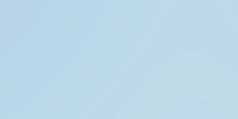












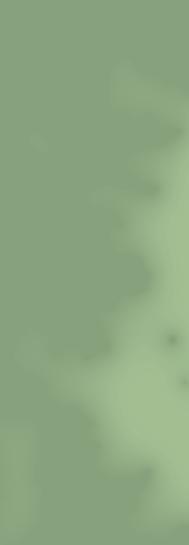




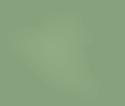






























SEA HARRIERS OF THE FALKLANDS WAR 24 C = 28, 29 & 30 102030 PEBBLE ISLAND WEST FALKLAND FOX BAY PORT STEPHENS 7 23 24 A 16 17 B 8 12 50 A = 18, 19 & 20 B = 21 & 22 C = 28, 29 & 30 0 10 102030 15 MILES KILOMETRES






























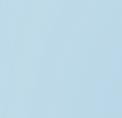























EAST FALKLAND NORTH FALKLAND SOUND GOOSE GREEN DARWIN SAN CARLOS PORT STANLEY PORT HOWARD 4 5 6 2/3 1 27 10 26 25 10 15 14 13 C 9 FALKLAND SOUND EAST FALKLAND NORTH FALKLAND SOUND GOOSE GREEN DARWIN SAN CARLOS PORT STANLEY PORT HOWARD 4 5 6 2/3 1 27 10 26 25 10 15 14 13 C 9
FALKLAND SOUND
Mirage
Sea Harrier
Dagger
Canberra
Pucara
Mirage
Skyhawk
Sea Harrier
Dagger
Puma
Canberra
Pucara
Agusta 109
Mirage
Sea Harrier
Skyhawk
Hercules
Dagger
Puma
Canberra Mirage
Pucara
Agusta 109
Sea Harrier
Skyhawk
Dagger
Hercules
Puma
Pucara
Canberra Mirage
Sea Harrier
Agusta 109
Skyhawk
Dagger
Hercules
Puma
Pucara
Agusta 109
Skyhawk
Canberra Mirage Dagger
Hercules
Sea Harrier
Puma
Pucara
Canberra
Agusta 109
Skyhawk
Sea Harrier
Mirage
Hercules
Puma
Canberra
Dagger
Agusta 109
Mirage
Pucara
Sea Harrier
Hercules
Dagger
Skyhawk
Canberra
Pucara
Sea Harrier
Puma
Mirage
Skyhawk
Canberra
Agusta 109
Dagger
Sea Harrier
Puma
Mirage
Hercules
Pucara
Canberra
Agusta 109
Dagger
Skyhawk
Mirage
Hercules
Pucara
Puma
Dagger
Sea Harrier
Skyhawk
Sea Harrier
Agusta 109
Pucara
Canberra
Puma
Hercules
Skyhawk
Canberra Mirage
Agusta 109
Puma
Sea Harrier
Mirage Dagger
Hercules
Dagger
Agusta 109
1221 MayVI Brigada AéreaIAI M5 DaggerC-409
Pucara
Pucara
Hercules
Skyhawk
Canberra Mirage
Skyhawk
Puma
Dagger
Puma
Pucara
Agusta 109
Agusta 109
1321 May
Hercules
Skyhawk
Hercules
Puma
Agusta 109
Hercules
012
Sea Harrier Losses KeyDate Unit AC TypeSerial Pilot 14 May 800 Naval Air Squadron BAe Sea Harrier FRS.1 XZ450Lieutenant Nicholas Taylor 26 May 801 Naval Air Squadron BAe Sea Harrier FRS.1 XZ452 Lieutenant Commander John E. Eyton-Jones 36 May 801 Naval Air Squadron BAe Sea Harrier FRS.1 XZ453 Lieutenant William A. Curtiss 423 May 800 Naval Air Squadron BAe Sea Harrier FRS.1 ZA192 Lieutenant Commander Gordon W. J. Batt 529 May 809 Naval Air Squadron BAe Sea Harrier FRS.1 ZA174 Lieutenant Commander Guy J. M. W. Broadwater 61 June 801 Naval Air Squadron BAe Sea Harrier FRS.1 XZ456 Flight Lieutenant Ian Mortimer Argentine Air-to-Air Losses to Sea Harriers 71 MayII Brigada Aérea BAC Canberra B Mk 62 B-110 Primer Teniente Mario Gonzalez & Primer Teniente Eduardo J. R. de Ibáñez 81 MayVII Brigada AéreaDassault Mirage IIIEAI-015 Primer Teniente Carlos Perona 91 MayVII Brigada AéreaDassault Mirage IIIEAI-019 Capitán Gustavo A. Garcia Cuerva 101 MayVI Brigada AéreaIAI M5 DaggerC-433 Primer Teniente José L. Ardiles 1121 MayIII Brigada AéreaFMA
SEA HARRIERS OF THE FALKLANDS WAR
IA-58A PucaraA-511Major Carlos Tomba
Primer
Teniente Fernando Luna
Segunda
Douglas A-4Q Skyhawk 3-A-314 Teniente
Marcelo
Escuadrilla Aeronaval de Caza y Ataque
de Fragata
Gustavo Márquez
Segunda
Douglas A-4Q Skyhawk 3-A-307 Capitán
Canberra
1421 May
Escuadrilla Aeronaval de Caza y Ataque
de Corbeta Alberto Philippi Sea Harrier




